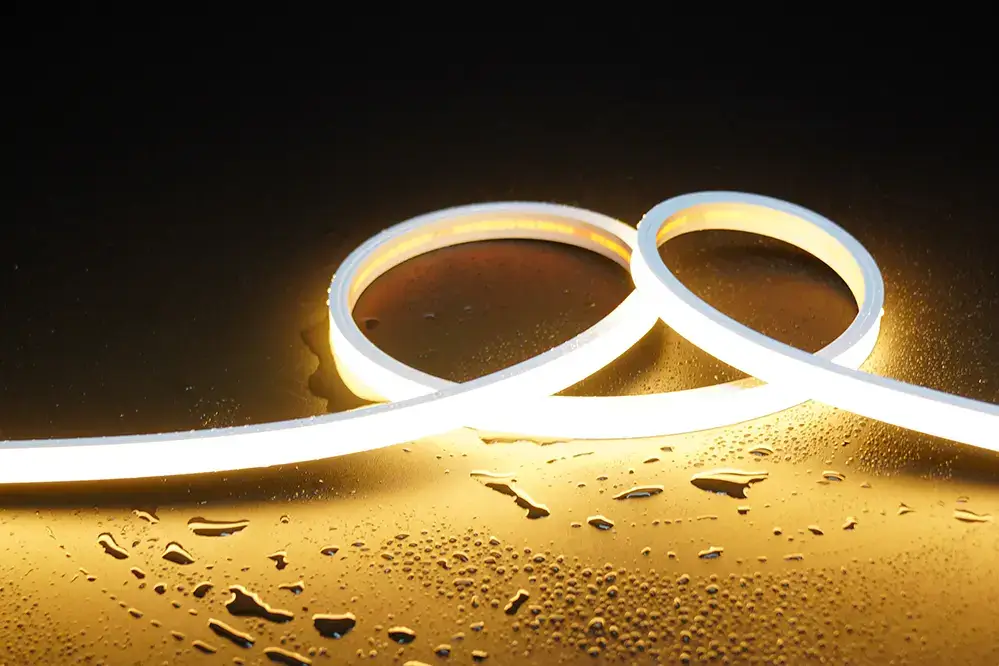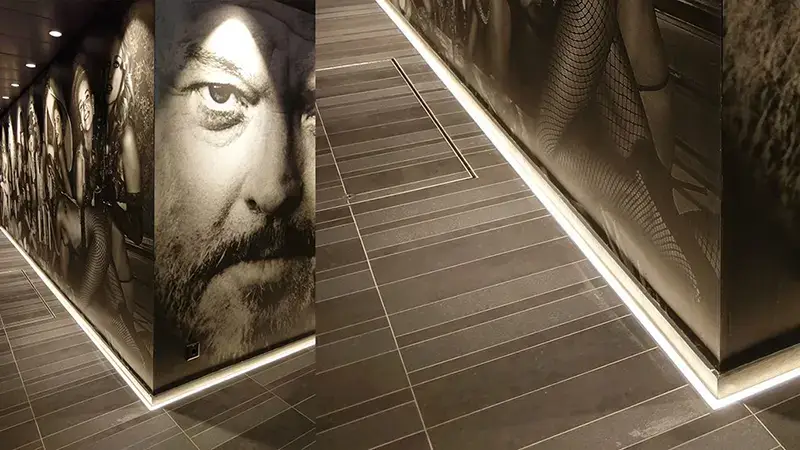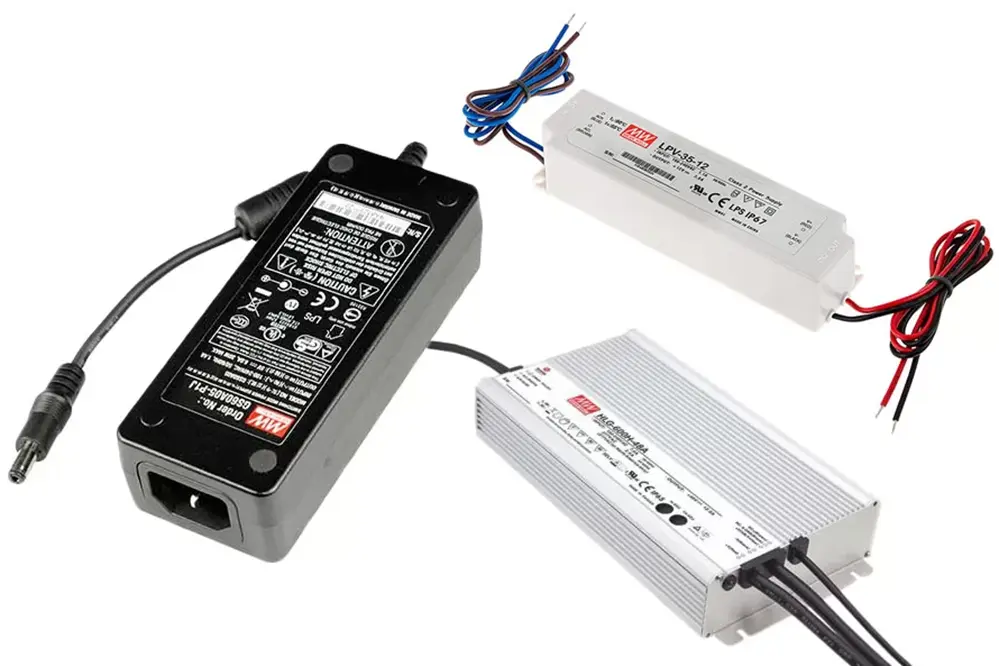Have you ever wondered how LED lighting for hobbyists can transform your creative projects into dazzling displays of innovation and artistry? In today’s fast-paced world, where technology and creativity intersect, LED lighting offers a unique opportunity to elevate your DIY endeavors to new heights. Yet, many hobbyists remain unaware of the full potential these tiny lights hold.
One common misconception is that LED lighting is complex and costly, deterring many from exploring its benefits. However, the reality is quite the opposite. With advancements in technology, LED lights have become more accessible and affordable, making them an ideal choice for hobbyists of all skill levels. The challenge lies in understanding how to harness their potential effectively.
The benefits of incorporating LED lights into your projects are manifold. Not only do they offer energy efficiency and longevity, but they also provide a spectrum of colors and intensities that can be tailored to suit any creative vision. From enhancing the ambiance of a room to adding intricate details to a model, LED lighting opens a world of possibilities.
In this article, we will explore the various applications of LED lighting and delve into how LED lights for hobbyists, including practical tips and inspiring project ideas. We’ll delve into the technical aspects, such as choosing the right type of LED and understanding basic wiring, ensuring you have the knowledge to succeed.
So, if you’re ready to illuminate your creativity and discover the endless potential of LED lighting, join us on this enlightening journey. Together, we’ll unlock the secrets to transforming your DIY projects into captivating works of art.
Understanding LED Lighting Basics
Diving into the world of LED lighting begins with understanding this extraordinary technology that has redefined illumination.
LEDs, or Light Emitting Diodes, owe their efficiency to semiconductor materials.
Their ability to convert electricity into light with minimal energy loss marks them as a paragon of technological advancement, offering increased longevity and varied color options, all without the heat emitted by traditional bulbs.
This technology’s flexibility enables hobbyists to explore an endless array of vibrant projects. From crafting ambient atmospheres to designing intricate artworks, LEDs provide a versatile canvas of creativity. By understanding LEDs’ fundamentals, enthusiasts can harness these small yet mighty components to devise illuminating innovations. Remember, innovation awaits just a “glow” away!
Choosing the Right LEDs for Your Project

Selecting suitable LEDs enhances your creative expression.
When embarking on a DIY project, choosing the right LEDs is vital. The sheer diversity of options in terms of size, shape, and color temperature can elevate your creations, turning simple ideas into stunning visual experiences. Moreover, compatibility with your project’s power requirements and environmental conditions is essential to ensure success and durability.
Better choices lead to better project outcomes.
Consider the specifics of your project – will it reside indoors or face the elements outside? LED strips, bulbs, and modules each offer unique advantages depending on these conditions. Understanding these distinctions will optimize performance and highlight your creative vision.
With thoughtful selection and experimentation, LED lighting for hobbyists becomes a dynamic playground. Imagine transforming spaces with a splash of color or crafting interactive art pieces where light responds to movement. Let your projects reflect your passion and expertise, lighting the way to future triumph.
Tools Needed for LED Projects
Embarking on a world of DIY LED projects requires foundational tools, which ensure a smooth, safe, and efficient crafting experience. This toolkit is essential for hobbyists pushing creativity’s boundaries.
Wire cutters and strippers make neat and precise connections, crucial for circumventing untimely mishaps.
Soldering tools, including soldering irons and solder, facilitate strong (and sometimes invisible) electrical connections fundamental for functionality.
Multimeters allow for measuring essential electrical parameters to maintain and troubleshoot circuit integrity.
Various pliers aid in manipulating LED components, providing the dexterity needed for handling delicate tasks. These tools foster an environment where innovation thrives and precision is paramount.
Finally, don’t underestimate how a hand’s steady guide enhances results. The right setup amplifies your LED lighting for hobbyists’ projects capabilities, taking your designs from mere concepts to brilliant realities.
Creating Simple LED Circuits
Creating simple LED circuits is a brilliant stepping stone for hobbyists, offering a blend of foundational knowledge and creative exploration. Starting with essential components like resistors, LEDs, and power sources, hobbyists can quickly grasp the principles of electricity and circuitry. As you develop these basic circuits, you’ll discover the transformative potential of LED lighting for hobbyists, allowing your imagination to shine through the soft, mesmerizing glow. Engaging in this process not only builds technical skills but also instills confidence as each successful circuit brings your vision to life in a brilliant dance of light.
Series vs. Parallel Circuits

While exploring DIY projects with LED lighting for hobbyists, understanding series vs. parallel circuits is essential. Series circuits have LEDs connected end-to-end, sharing a single electrical pathway.
In contrast, parallel circuits allow each LED to have its own path, akin to lanes on a highway. This ensures uniform brightness and efficiency, enhancing your project’s aesthetic appeal and functionality.
In parallel circuits, a malfunctioning LED won’t affect others, ensuring continued luminosity and reliability.
To innovate with LED lighting for hobbyists, mastering series and parallel configurations enhances your project range. Series setups are energy-efficient but impact if one LED fails; parallel designs ensure uninterrupted illumination, crucial for captivating and resilient displays. The choice profoundly influences your project’s effectiveness, offering creative ways to illuminate your vision while managing electrical flow carefully.
Designing Custom LED Light Fixtures
Venturing into the realm of designing custom LED light fixtures can be both exhilarating and rewarding for hobbyists.
Harnessing the transformative power of LED lighting for hobbyists opens a gateway to unique artistic expressions and practical solutions. By embracing the endless possibilities, you can craft bespoke light fixtures that not only illuminate but also narrate a story through light. Through careful consideration of design principles, achieving a balance between form and function becomes a thrilling journey that enhances both creativity and skillset.
Remarkably, modern LED technology offers an array of components suited for custom designs. From sleek linear profiles to flexible strips, these options provide diverse avenues for innovation. Incorporating dimmers and smart controls ensures personalized ambiance and efficient energy use, elevating your craft to not just a functional creation but a spectacle of design.
To thrill and inspire, tapping into the vast array of available resources, such as online forums and design tools, can significantly enhance your project. Engaging with a community of like-minded hobbyists fosters innovation, as sharing insights and experiential wisdom propels unique design solutions. Ultimately, delving into designing custom LED fixtures not only illuminates spaces but also brightens your journey as a creator, inviting fresh perspectives and boundless opportunities.
Incorporating LED Lighting into Models
Enhancing model kits with LED lighting opens new dimensions of realism, style, and intrigue, offering hobbyists an exhilarating opportunity to showcase their craftmanship. The array of LED options available today allows for astounding customization.
These possibilities breathe life into the miniature landscapes, vehicles, and buildings, transforming static creations into dynamic displays. Choose LED strips or tiny bulbs (fiber optics being particularly useful) for various applications.
Lighting techniques can highlight textures, create shadows, or simulate movement, capturing the attention of viewers. LEDs integrated into model kits introduce fluidity and interactivity into otherwise static art forms.
Adding unique lighting elements to your models requires precise planning and creativity. Placing LEDs thoughtfully enhances realism, aiding in achieving breathtaking design that captivates and inspires.
Strategic placement in showcasing focal points, such as illuminated windows or detailed cockpits, offers hobbyists the thrill of narrating a story through lights, enhancing both viewer engagement and the creator’s satisfaction.
Ultimately, the art of LED integration in models offers a path to reveal the heart of one’s vision. Harnessing innovative techniques nurtures creativity, ensuring your creations remain a testament to ingenuity and inspiration.
LED Lighting for Art Projects

LED lighting offers artists an extraordinary tool to breathe life into their creations, enhancing textures, shapes, and colors with an aura of vibrant illumination.
The flexibility of LED fixtures empowers artists to craft visually captivating environments.
Artists, embracing LED technology, transform conventional canvases into dynamic works, enabling (and reshaping) unique artistic experiences.
These luminous elements are pivotal in crafting poignant atmospheres or simulating natural lighting conditions, enriching each brushstroke with depth and dimension.
Particularly in mixed-media work, LEDs can elevate layering techniques, integrating light as a dynamic, interactive component of the artistic narrative, bridging tactile art with visual fascination.
Ultimately, the infusion of LED lighting into art projects unlocks a realm of possibilities. Creativity transcends boundaries, turning simple ideas into compelling luminescent masterpieces.
Tips for Soldering LEDs
Soldering LEDs requires precision and care.
Embarking on an LED lighting project can be immensely rewarding. The first essential tip is to equip yourself with the proper soldering tools, such as a quality soldering iron and solder wire. Moreover, ensure that you hone your technique by practicing on spare components before tackling more complex designs. Ultimately, patience and diligence are the keys to transforming raw materials into stunning illuminated creations.
Maintaining cleanliness will aid your soldering success.
The surfaces you’re working with should be free from dust and oil. If necessary, use isopropyl alcohol to clean the LED contacts and the areas to be soldered. This can significantly improve the quality of your solder joints, ensuring a strong and reliable connection.
For the safety of your components and yourself, always work in a well-ventilated environment. Ensure you’re mindful of the heat applied to the LEDs to prevent damage. Soldering heat-sensitive parts demands a steady hand and a consistently watchful eye, safeguarding your LEDs from shorts or deficiencies that could affect performance. By mastering these soldering techniques, hobbyists can confidently bring brilliance to their DIY LED lighting projects.
Power Supply Options for LEDs

Choosing the right power supply is crucial, especially when exploring LED lighting for hobbyists.
First and foremost, it’s important to configure a power supply tailored to the specific requirements of your LED project, accommodating voltage, current, and power ratings that align with the characteristics of your LEDs. A constant voltage power supply keeps the output voltage consistent, which is ideal for strips, while constant current supplies regulate the current flow—perfect for single high-power LEDs.
Additionally, consider the convenience of a plug-in adapter for smaller projects. An adapter offers simplicity, allowing you to plug directly into your household outlets without additional installations, ensuring you maintain focus on the creative aspects of your DIY endeavor.
For more advanced projects, an adjustable power supply provides expansive flexibility, enabling you to experiment across varied LED specifications. By employing this, hobbyists can precisely alter voltage or current settings, thereby optimizing LED performance and achieving unparalleled brilliance in customized lighting designs. The right power supply doesn’t just illuminate your projects; it unlocks the full spectrum of creativity and experimentation.
Safety Precautions for Hobbyists
When embarking on a DIY project with LED lighting for hobbyists, safety should be your cornerstone. Proper precautions and an understanding of the fundamentals can ensure a smooth and secure experience.
Firstly, always familiarize yourself with the voltage and current specifications. This knowledge helps prevent overheating.
Remember, safety gear like gloves and goggles is essential, particularly when soldering. Consider investing in a reliable multimeter for added assurance.
Use appropriate enclosures for your circuits, protecting them from external elements and preventing accidental contact. This ensures longevity, as well as peace of mind.
Never underestimate the importance of proper ventilation. Many components generate heat, necessitating a workspace that allows adequate airflow to mitigate risks.
Finally, keep a fire extinguisher nearby when dealing with electrical projects. Proactive safety measures serve as your best ally in safeguarding both your work and your health.
Troubleshooting Common LED Problems
Navigating the exciting world of LED lighting projects can sometimes be met with challenges, but they are often easy to troubleshoot, turning them into opportunities to learn.
One common issue is when the LED won’t turn on. Typically, this is due to poor connections.
Begin by checking to ensure that all connections are secure and that wires are firmly attached to their respective components. Testing with a multimeter can swiftly identify faulty wires or insufficient power supply, allowing you to fix the problem efficiently.
Another frequent problem is flickering LEDs, which can often result from a mismatch in voltage or unstable power supply. To address this, consider using a constant current driver to stabilize the electricity flow. LEDs require specific voltage and current conditions to function optimally, so double-checking these variables can help restore a steady and reliable glow to your project. Embrace these challenges, as they contribute to your growth as a skilled and knowledgeable hobbyist.
Resources for LED Lighting Enthusiasts
Embarking on the journey of LED lighting innovation opens up a world of endless creativity and learning for hobbyists.
For those eager to deepen their expertise, there is a wealth of resources available to foster understanding and skill development. Online forums, like Reddit’s r/diyelectronics or specific LED hobby groups, allow individuals to exchange ideas and solutions, inspiring new project concepts. These communities offer avenues for troubleshooting advice and help contextualize complex technical information, providing valuable mentorship through a shared passion for illumination.
Additionally, websites such as Adafruit and SparkFun provide comprehensive tutorials and project guides tailored for hobbyists. These resources bridge the gap between technical knowledge and practical application, enabling LED enthusiasts to explore both simple and advanced projects with confidence.
Lastly, YouTube channels dedicated to electronics and LEDs, such as GreatScott! and EEVblog, offer visual and step-by-step guidance. These educational resources not only build your technical acumen but also ignite the imagination, sparking new visions of what your LED projects can become. With these insightful platforms, your mastery of LED lighting components is limited only by your ambition and creativity.
Conclusion
Embracing the world of LED lighting for hobbyists opens a gateway to unparalleled creativity and innovation, offering a unique blend of technical skill enhancement and artistic expression. This dynamic field allows hobbyists to explore a multitude of applications, from transforming home décor to crafting interactive art installations. By tapping into the vast array of online resources, community forums, and video tutorials, enthusiasts are equipped with the tools needed to bring their imaginative ideas to life. Each project undertaken not only enriches their expertise but also fuels an ever-growing excitement for future endeavors. This continuous learning journey ensures that hobbyists remain at the forefront of creative exploration.
As LED technology continues to evolve, now is an extraordinary time to be part of this vibrant community. The possibilities are boundless, encouraging hobbyists to push the boundaries of what is possible and illuminate their path to discovery. By leveraging the latest advancements and sharing insights within the community, hobbyists can stay ahead of trends and innovations. Let your curiosity lead the way, and unleash the luminosity of your creativity, transforming your visions into reality. This thriving sphere of LED lighting for hobbyists promises not only to enhance your projects but also to inspire a lifelong passion for discovery and innovation.





